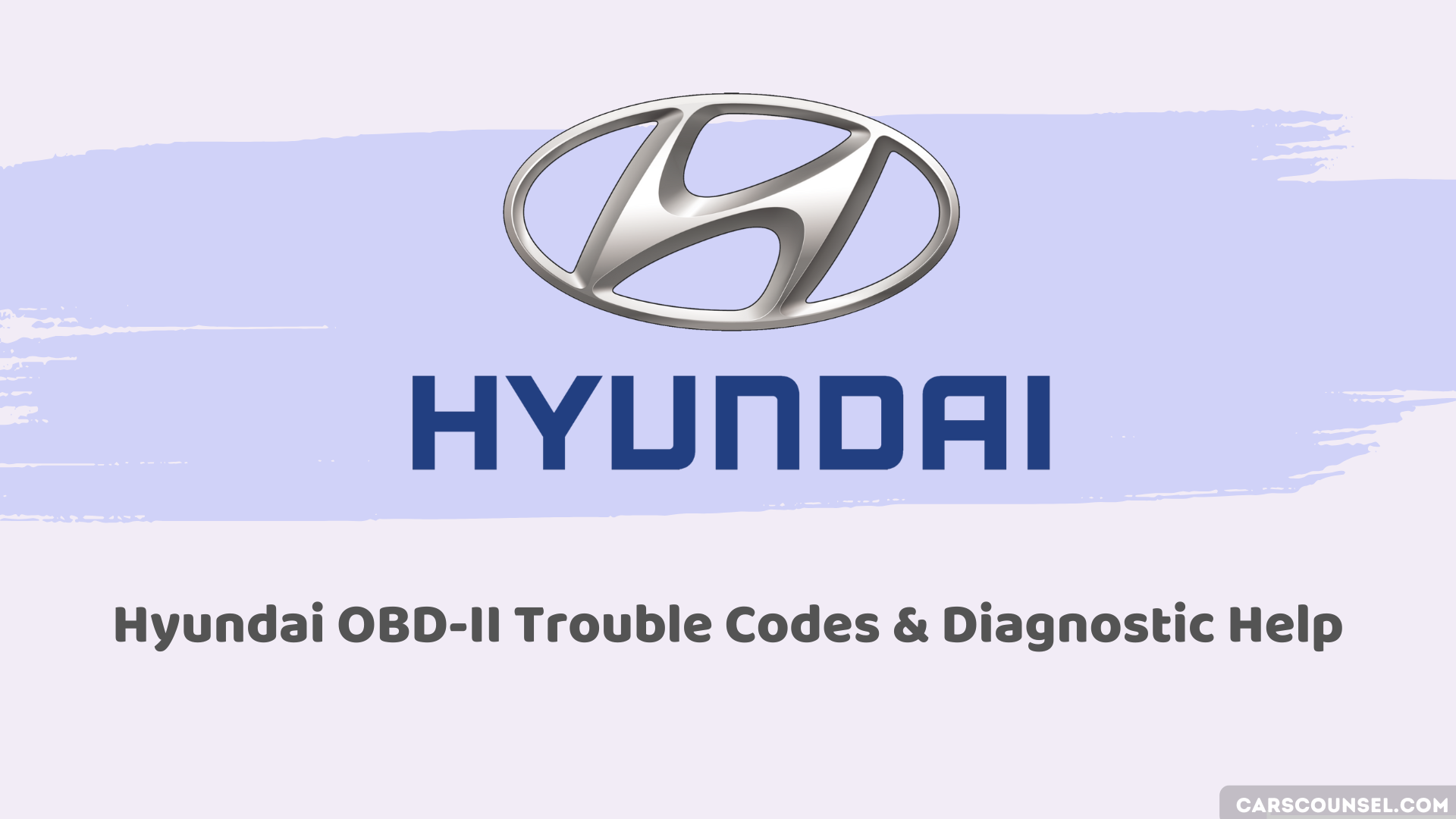Just like a cryptic message from the Oracle of Delphi, your Hyundai’s check engine light can be a mysterious and frustrating enigma. But, unlike the ancient Greeks, you don’t need to make a pilgrimage to uncover its secrets. You see, the code behind that glowing warning is just a key to revealing the truth about what’s going on under the hood.
And, with the right tools and knowledge, you can crack the code and get your vehicle running smoothly again. But, which code is it, and what does it really mean?

Quick Navigation
Understanding Hyundai OBD-II Codes
As you delve into the world of Hyundai OBD-II codes, it’s essential to understand the underlying structure and organization of these error codes, then dig further.
Hyundai OBD-II Trouble Codes are divided into categories, including P0xxx, P1xxx, C0xxx, U0xxx, and B0xxx, each corresponding to different vehicle systems and functions.
The Control Module in your Hyundai vehicle stores these codes, which can be accessed using an OBD-II scanner connected to the OBD-II port.
When the Hyundai check engine light illuminates, it indicates a problem that’s been detected by the onboard diagnostics system.
Understanding these codes requires consulting vehicle repair manuals and using specialized diagnostic tools to retrieve and interpret the data.
Diagnosing and Fixing Issues
When your Hyundai’s check engine light comes on, it’s time to roll up your sleeves and get to work. You’ll need an OBD-II scanner to read the Hyundai OBD-II codes, which can be purchased for under $25.
Loose or damaged gas caps, bad oxygen sensors, and problems with spark plugs or ignition coils are common causes of the Hyundai check engine light.
To fix the issue, read the error code using the scanner, then schedule a professional replacement for failing spark plugs or ignition coils. For Mass Airflow Sensor failure, replace the filter and clear the codes.
If you’re unsure, consult online resources like HyundaiTechInfo.com or vehicle repair manuals for specific repair procedures. Certified Hyundai technicians have extensive training on Hyundai-specific codes, so don’t hesitate to seek their expertise if needed.
Error Code Categories and Examples
If you investigate error codes, you’ll discover that the OBD-II system categorizes them into five distinct groups, each serving a specific purpose.
Understanding these categories is vital for diagnosing and fixing issues related to Hyundai OBD-II trouble as a certified Hyundai owner.
The five categories include P0xxx (generic codes), P1xxx (manufacturer-specific codes), C0xxx (chassis codes), U0xxx (network codes), and B0xxx (body codes).
Generic codes are applicable to all vehicles, while manufacturer-specific codes are unique to each vehicle make.
Chassis codes relate to vehicle body and chassis systems, network codes to vehicle communication networks, and body codes to vehicle body systems.
Familiarizing yourself with these OBD-II codes and categories will help you better understand Hyundai OBD-II trouble codes and identify the root cause of the issue.
Most Common Hyundai OBD-II Trouble Codes
| Code | Description |
|---|---|
| P1100 | Manifold Absolute Pressure (MAP) Sensor Malfunction (Open/Short) |
| P1102 | Manifold Absolute Pressure (MAP) Sensor Malfunction – Low Voltage |
| P1103 | Manifold Absolute Pressure (MAP) Sensor Malfunction – High Voltage |
| P1106 | Manifold Absolute Pressure (MAP) Sensor – Signal High |
| P1107 | Manifold Absolute Pressure (MAP) Sensor – Signal Low |
| P1110 | Electronic Throttle System (ETS) – Malfunction |
| P1115 | Engine Coolant Temperature (ECT) Sensor – Signal Malfunction |
| P1118 | Throttle Motor – Malfunction |
| P1147 | ETS Sub Accel Position Sensor 1 Malfunction |
| P1151 | ETS Main Accel Position Sensor 2 Malfunction |
| P1155 | ETS Limp Home Valve |
| P1159 | Variable Intake Motor Malfunction |
| P1171 | Electronic Throttle System Open |
| P1172 | Electronic Throttle System Motor Current |
| P1173 | Electronic Throttle System Rationality Malfunction |
| P1174 | Electronic Throttle System #1 Close Malfunction |
| P1175 | Electronic Throttle System #2 Close Malfunction |
| P1176 | ETS Motor Open/Short #1 |
| P1178 | ETS Motor Battery Voltage Open |
| P1295 | Electronic Throttle System (ETS) – Circuit Malfunction |
| P1330 | Spark Timing Adjust Malfunction |
| P1521 | Power Steering Switch Malfunction |
| P1607 | Electronic Throttle System Communication Error |
| P1614 | Electronic Throttle System Module Malfunction |
| P1632 | Traction Control System Malfunction |
| B1202 | Heater Water Temperature Sensor Open High |
| B1203 | Heater Water Temperature Sensor Short Low |
| B1208 | Intake Potentiometer Open Low |
| B1209 | Intake Potentiometer Short High |
| B1233 | In-Car Temperature Sensor Short Low |
| B1234 | In-Car Temperature Sensor Open High |
| C1203 | Wheel Speed Sensor Front-RH Open/Short |
| C1204 | Wheel Speed Sensor Front-RH Range / Performance / Intermittent |
| C1205 | Wheel Speed Sensor Front-RH Invalid/no Signal |
| C1210 | Wheel Speed Sensor Rear-RH Range / Performance / Intermittent |
| C1211 | Wheel Speed Sensor Rear-RH Invalid/no Signal |
| C1235 | Primary Pressure Sensor-Electrical |
| C1237 | Primary Pressure Sensor-Signal |
| C1259 | Steering Angle Sensor – Electrical Malfunction |
| C1260 | Steering Angle Sensor Circuit-Signal |
| C1282 | Yaw Rate & Lateral G Sensor-Electrical |
| C1283 | Yaw Rate & Lateral G Sensor-Signal |
| C1503 | TCS/ESC ESP Switch Error |
| C1513 | Brake Switch Circuit Error |
| C1604 | ECU Hardware Error |
| C1605 | CAN Hardware Error |
| C1611 | CAN Time-out ECM |
| C1612 | CAN Time-out TCM |
| C1613 | CAN Wrong Message |
| C1616 | CAN Bus Off |
| C1647 | CAN Hardware Error – Sensor Channel |

